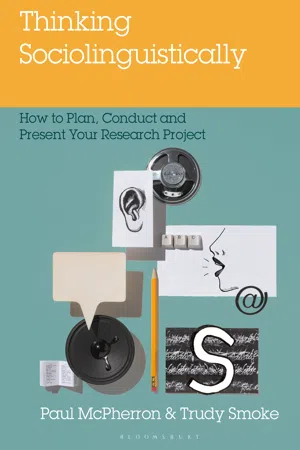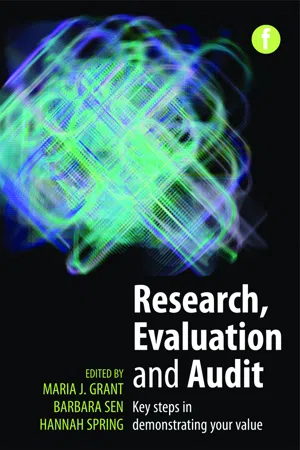Social Sciences
Data Analysis Sociology
Data analysis in sociology involves the systematic examination of social data to identify patterns, trends, and relationships within a given population or social group. It encompasses various quantitative and qualitative methods to interpret and make sense of social phenomena, such as surveys, interviews, and statistical analysis. The goal is to gain insights into social behavior and structures.
Written by Perlego with AI-assistance
Related key terms
1 of 5
5 Key excerpts on "Data Analysis Sociology"
- eBook - PDF
- Sophie Smailes, Clare Street(Authors)
- 2017(Publication Date)
- Red Globe Press(Publisher)
It makes inferences from the sample data and applies it to what the whole popula-tion might be like, i.e. generalisation. Often this is related to an original hypothesis that makes predictions of the relationships between two or more variables. For example, Chambers and Swanson’s (2006) research looked at the efficacy of a health assessment tool for measuring risk factors associated with obesity; their preliminary analysis showed a positive relationship between BMI and such factors as attitudes, emotions and perceived difficulties in engaging in physical activities, and they inferred from this that it might explain why exercise and diet programmes that do not take this into account are less successful. Useful resources Bowling, A. (2009) ‘Preparation of Quantitative Data for Coding and Analysis’, in Research Methods in Health: Investigating Health and Health Services , 3rd edn. Maidenhead : Open University Press. Bryman, A. (2008) Chapters 12 to 15, in Social Research Methods , 3rd edn. Oxford: Oxford University Press. Marsh, C. and Elliot, J. (2008) Exploring Data: An Introduction to Data Analysis for Social Scientists , 2nd edn. Cambridge: Polity Press. Qualitative analysis There are a large number of methods qualitative researchers use to analyse the data they have gathered. Unlike quantitative methods the focus here is on evaluations, interpretations, meanings and insights. Analysis can be in-depth and ongoing and involve an enormous amount of data to work with. Some of the qualities of qualitative data analysis are as follows: It involves a large amount of data in the form of recordings, transcripts, field notes, descriptions and visuals. 5 the health studies companion 326 The majority of theorists see analysis as ‘descriptions of events and of development of concepts, categories’ (Sarantakos 1998, p. 314). - eBook - PDF
- Dana S. Dunn(Author)
- 2012(Publication Date)
- Wiley(Publisher)
Most social psychological research relies on statistical analyses. This chapter offers advice on planning, executing, and writing about the statistical analyses of social psychological data collected in the course of student research. Space constraints prevent me from teaching you the “nuts and bolts” of statistical analysis. I will assume that you already learned about statistics in another class or that your social psychology instructor will advise you on how to do any necessary analysis. Keep in mind, too, that there are many books available on introductory statistical analysis, as well as a variety of software packages that will do the bulk of the work for you. My intent here is simply to persuade you that data analysis is another important skill that social psychologists acquire in the course of their research. Basic Statistics How do we know what is or isn’t so when it comes to the analysis of data? We rely on statistics. Some piece of data that is represented in numerical form is called a statistic. Statistical analysis is the process of testing hypotheses about, and drawing inferences from, data using mathemati- cally based rules. Recall that we discussed some statistical issues earlier in this book when we considered samples, populations, and randomization (see, e.g., Chapter 4). Social psychologists rely on two types of statistics: descriptive statistics and inferential statistics. Descriptive statistics are procedures researchers use so they can describe, characterize, organize, and summarize the main qualities of data drawn from a sample. The main descriptive statistic used by social psychologists (and virtually all other types of psychologists) is the mean or statistical average (e.g., the usual or typical level of reported attractiveness of a confederate). - eBook - PDF
Thinking Sociolinguistically
How to Plan, Conduct and Present Your Research Project
- Paul McPherron, Trudy Smoke(Authors)
- 2018(Publication Date)
- Bloomsbury Academic(Publisher)
107 Part III Data Analysis Methods in Sociolinguistics 109 7 Qualitative data analysis CHAPTER OVERVIEW • Introduction: What Are Qualitative Analysis Methods in Sociolinguistics Research? • Performing a Qualitative Analysis – Organizing the Data – Coding the Data – Interpreting the Data • Qualitative Analysis Methods in Published Research • Qualitative Analysis Methods in Student Research • Steps for Completing a Qualitative Analysis of Your Collected Data Introduction: what are qualitative analysis methods in sociolinguistics research? As introduced in Chapter 1 , qualitative research—along with its corollary quantitative research—is one of the two main research categories in socio-linguistics. Qualitative research encompasses many data collection methods, including participant observation, interviews, open-ended responses on questionnaires, discourse analysis, and other ethnographic and case study approaches to data collection. We deal with the specifics of performing a discourse analysis with your collected data in Chapter 8 , but in this chapter we focus more broadly on ways to analyze all qualitative data. As we also noted in Chapter 1 , qualitative research is an inductive, emic approach to research, drawing primarily on textual data and examining it though an iterative, interpretive process in which data analysis may lead to further data collection in order to achieve thick description and data satura-tion or the point when new data only confirms a researcher’s previous analy-sis. Croker ( 2009 ) notes that data analysis in qualitative research “will often steer data collection, as ongoing analysis indicates what avenues of research to pursue—who to observe or interview next, what questions to ask, and what documents to request” (p. 10). Qualitative data analysis for students and for researchers may lead to new and expanded research questions while also providing insight on how their participants understand their world and use language to construct identities - eBook - PDF
Research, Evaluation and Audit
Key steps in demonstrating your value
- Maria J. Grant, Barbara Sen, Hannah Spring, Maria J. Grant, Barbara Sen, Hannah Spring(Authors)
- 2014(Publication Date)
- Facet Publishing(Publisher)
What is data analysis? Data analysis is a vital step in the research process. Whatever method has been applied to data collection, at some point it will be necessary to translate raw data into usable information. Analysis is usually undertaken after all the data have been gathered, but it may also be undertaken during the collection period or as part of a pilot study to ensure the most appropriate method of collection is selected. Whichever approach is undertaken, it is important to remember that without data, no analysis can take place, and that the quality of your analysis will depend, to a great extent, on the quality of your data. As Robson puts it: ‘No data – no project’ (Robson, 2002, 385). What comes before? Before data analysis can commence it will be necessary to go through a number of stages. These have been discussed in earlier chapters, but in summary, before the analysis stage, you should have undertaken the following activities: • identifying research problems • searching the existing literature base • critical appraisal of the literature 9 Data analysis Jenny Craven and Jillian R. Griffiths ‘What is data analysis? In fact, what is data?’ ‘Statistics are just plain scary!’ ‘Can’t I get someone else to do this bit?’ • developing the questions and/or hypothesis • applying a theoretical base • sampling strategies • data collection techniques. You should now be ready to start analysing your data. Types of analysis: quantitative and qualitative There are a variety of approaches to conducting research (see Chapter 1) but in general research tends to use an inductive or deductive approach. An inductive approach seeks to build up a theory that is adequately grounded in a number of relevant cases and involves comparing concepts or categories emerging from one stage of the data analysis with concepts emerging from the next stage. These comparisons form the basis of the emerging theory. - eBook - PDF
Successful Dissertations
The Complete Guide for Education, Childhood and Early Childhood Studies Students
- Caron Carter(Author)
- 2018(Publication Date)
- Bloomsbury Academic(Publisher)
Who would benefit from these recommendations? Why should he be cautious with them? What is involved in quantitative analysis? Quantitative analysis in education is the process of presenting and interpreting, in numerical fashion, research participants’ attitudes, views, opinions and/or behaviours. In other words, to examine the distribution of and/or relationships between the variables under investigation: how they are distributed and to what extent and in what ways they are related in a given context (Punch and Oancea, 2014). The primary aim is to identify patterns and regularities in the data (Fielding and Gilbert, 2006). A key issue in quantitative analysis is that the analysis can be undertaken at two distinct levels. The first, and the one that you are most likely to be engaged in as an undergraduate student, is descriptive analysis, or descriptive statistics as it is commonly known. Put simply, this involves the use of appropriate statistical techniques to transform potentially large amounts of numerical data into a form such as tables and/or charts that ‘describe’ your findings in such a way as to make them easy to understand and interpret (Crossman, 2016). The second-level of analysis is what is 212 SUCCESSFUL DISSERTATIONS known as inferential statistics. This is more complex than descriptive statistics and is aimed at drawing conclusions from the data and establishing the extent to which the findings from a sample can be applied to the reference population from which that sample was drawn (Crossman, 2016). Thus descriptive statistics stop at presenting and interpreting data obtained from a sample (a sample of university students, for example), whereas inferential statistics goes a step further: it uses the findings from a sample to make predictions about the reference population (e.g. all the students in a university).
Index pages curate the most relevant extracts from our library of academic textbooks. They’ve been created using an in-house natural language model (NLM), each adding context and meaning to key research topics.




